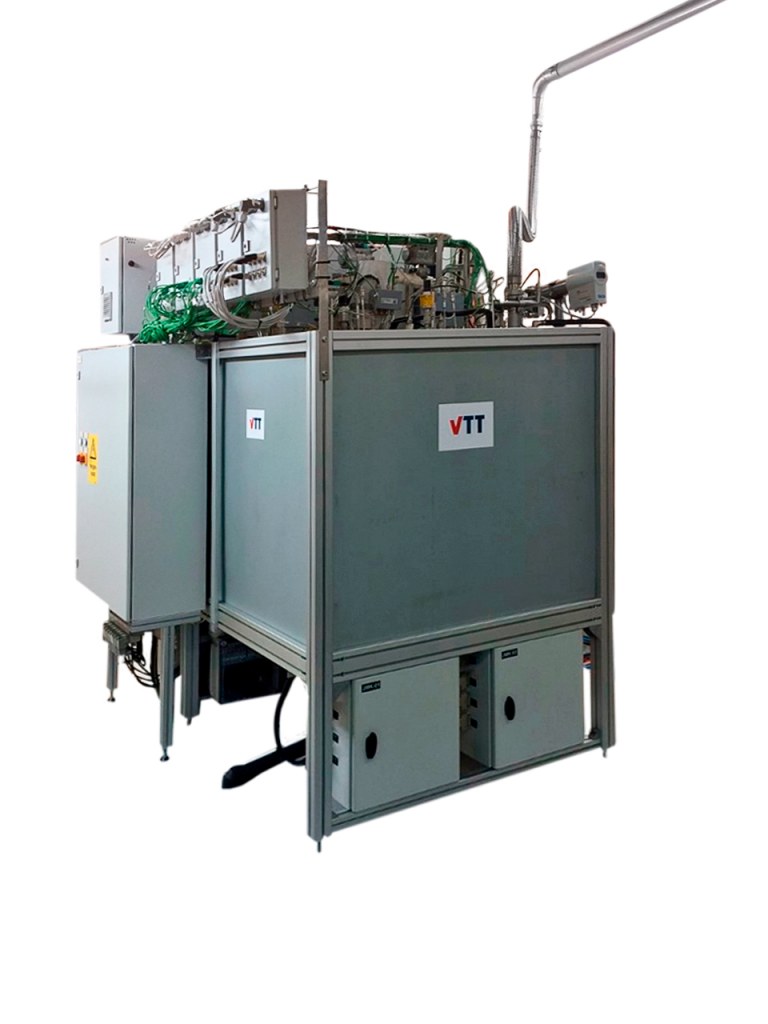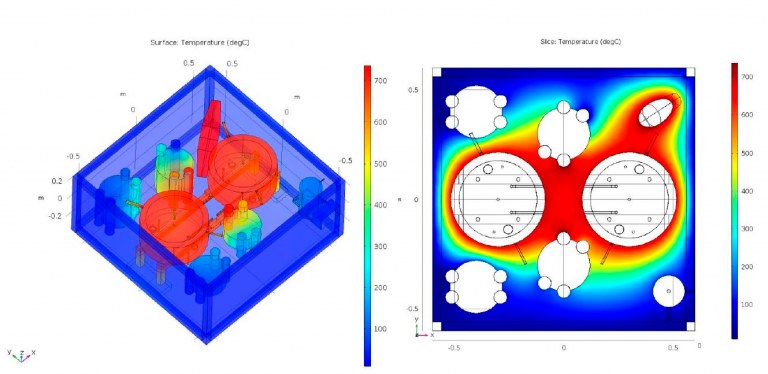
– Our research is related to the hot topic of the day, the hydrogen boom. Due to climate change, we need to shift away from fossil fuels as quickly as possible. We need a new energy system to replace them, says Senior Scientist Ville Saarinen from VTT Technical Research Centre of Finland.
According to Saarinen, wind, water and the sun are all good energy sources, but the problem with them is that it is not always windy or sunny. Energy production varies according to the conditions. Energy needs to be stored for the calm and cloudy days. On the other hand, excess energy can be generated on particularly windy or sunny days, and this energy also needs to be stored.
Researchers at VTT have built a two-way mini power plant based on reversible solid oxide cell (rSOC) technology. It can help store electric energy. Whenever there is plenty of electricity available, the technology can store it as hydrogen. When there is a shortage of electricity, the technology can quickly be reversed: it can produce electricity from the stored hydrogen to stabilise the local grid.
– Accumulators can also smooth out individual negative spikes in energy, but in my opinion, hydrogen is the only storage option when building new energy systems, Saarinen explains.

Hydrogen is a carbon-free renewable fuel, but 96 percent of hydrogen is currently produced with fossil fuels. VTT's technology utilises electrolysis to produce hydrogen. In water electrolysis, an electric current is used to split water into hydrogen and oxygen, with zero emissions.
– Naturally the electric current used to separate hydrogen from water also has to be green.
The technology is under development. VTT’s demo system generates ten kilowatts, but according to Saarinen it can be upscaled for a larger power plant. Carbon neutrality goals create a global demand for green hydrogen.
What makes this system special, says Saarinen, is its high efficiency in producing hydrogen.
– Due to the high operating temperature of solid oxide technology, about 700 degrees, the efficiency of the system is up to more than 80 percent. If you consider using the system on a larger scale, such as across Finland or Europe, each percentage unit of efficiency equals a lot of money.

The system developed by VTT is related to a three-year EU project that ended in 2020. Saarinen was involved in the project for two years. There are still several ongoing research projects at VTT related to the technology in the system: some focus on fuels cells, some on solid oxide systems and some on electrolysis. VTT has studied solid oxide systems for some twenty years.
VTT’s Fuel Cells and Hydrogen team consists of about 20 people. The team has an extensive international cooperation network.
– Finland possesses cutting-edge expertise in electrolysis technology. I see a great potential in this. Perhaps Finland could be home to electrolysis plants in the future, envisions Saarinen.
Perhaps, considering the hydrogen boom. But Saarinen points out that there have been hydrogen booms before. This is now the fifth boom, by his calculation. The excitement has always died down somehow. He feels that solid oxide technology has not yet made a breakthrough due to its expensive price. The high operating temperature requires complex, expensive technology. This technology is not yet available commercially, but the systems are currently customised to order.
– But things are looking good right now. Politicians have realised that we really do have to do something about climate change. We are keeping an eye on the situation in Europe, and Finland is lagging behind in the hydrogen boom. If only we were on board the hydrogen train, even if we are not riding in the first carriage! I believe that hydrogen will become a commodity similar to crude oil, says Saarinen.
He finds his work developing cleantech to be meaningful.
– I believe that companies and cities will be interested in this once we can set up some demonstration sites. Nobody wants to be branded as a polluter these days.
VTT’s two-way electrolyser-fuel cell system
One of the five finalists of the Finnish Engineering Award 2021. Nominees: D.Sc. Ville Saarinen, M.Sc. Mikko Kotisaari, M.Sc. Jari Pennanen, M.Sc. Valtteri Pulkkinen, D.Sc. Olli Himanen, PhD Jari Kiviaho, D.Sc. Olivier Thomann and M.Sc. Aki Nieminen.